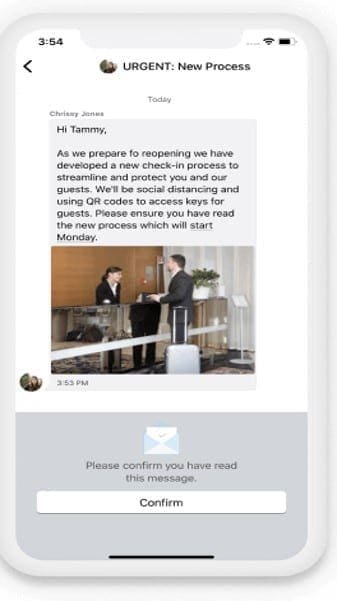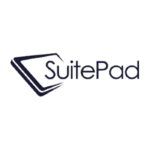 It may be a new year, but it is far from business as usual for those working in the hospitality industry. According to new data released from the U.S. Department of labor, “498,000 employees were laid off from their jobs in the leisure and hospitality sector in December 2020.” The Washington Post reports that “of those, about 75% were employees at restaurants and bars,” and “nearly 4 million leisure and hospitality jobs have been lost since February 2020, according to economists.”
It may be a new year, but it is far from business as usual for those working in the hospitality industry. According to new data released from the U.S. Department of labor, “498,000 employees were laid off from their jobs in the leisure and hospitality sector in December 2020.” The Washington Post reports that “of those, about 75% were employees at restaurants and bars,” and “nearly 4 million leisure and hospitality jobs have been lost since February 2020, according to economists.”
One of the biggest lessons learned last year was that communicating with hotel housekeepers, laundry workers, roomservice attendants, wait staff, bartenders, valets, bellmen, and countless others who were either furloughed or employed but not on premises was extremely difficult since company emails for frontline workers do not typically exist. Amidst the turmoil, finding time to place phone calls to employees or snail mail them unemployment forms and other documents was not a productive use of management’s time. Nonetheless, employees were entitled to receive employment information that was critical to their livelihoods, but without a digital communication platform in place, receiving the information was difficult and required a lot of coordination effort.
Putting frontline workers first
For years hospitality leaders have been focused on the guest experience, and rightly so. But if the recent pandemic has shown us anything, it’s that the employee experience must take precedence if workers are to perform their jobs to the best of their abilities and be willing to make the workplace safe for customers.
Hoteliers and restaurateurs learned amidst the pandemic that the safety, health, and financial well-being of their frontline teams were under-supported. It is the frontline workers who, at every level, serve as the heartbeat of the hotel or restaurant enterprise, and they are the people responsible for what makes business happen. Yet, management was not well enough prepared to communicate with their teams during an unprecedented time.
What we learned in 2020 is that digitalization of the workforce is key to ensuring that every employee — regardless of their physical location or job description — is connected to the organization. It is that digital bond that empowers employees to do their jobs to the best of their abilities, motivates them to want to come back to work even in the riskiest of environments and spreads confidence from workers to guests that hotels and restaurants are safe, if proper procedures are being followed.
Here are four digitalization trends that emerged from the turmoil of COVID-19, each of which are reshaping the corporate culture of hospitality companies and the way managers are engaging with employees and vice versa for the foreseeable future:
1. Digitalization is helping managers to really know their frontline workers
An important question that hospitality operators found themselves struggling to answer in 2020 was: “Who are our frontline workers?” This extends far beyond knowing a person’s name and job title. Rather, it’s a matter of knowing: Is Bob Smith engaged with the business? Does he understand the company culture? Is he receiving relevant employment information, reading the content, and acting upon instructions? Does Amy Nguyen feel like she is part of the team or does she struggle with isolation from the group? When is her birthday and work anniversary and when was the last time she was recognized for a job well done? What is Carlos Ortega’s family and financial situation? Do you know his primary language and are you communicating with him accordingly? Is the company helping him equitably and sustainably? Does Agnes Balog feel safe while on premises? Does she feel successful in her role and respected by management and her peers? Does she complain in front of guests or does she make them feel safe and welcome and wanting to return?
Before you can know your guests, you must first get to know those with whom you entrust your guests’ experiences. Digitalizing the workplace speeds the familiarization process. It breaks down walls, removes language barriers, and provides an easily accessible snapshot of everyone you employ, from longevity with the company and career goals to comments from guests and managers about their performance.
Digitalization also ensures that everyone is receiving information relevant to their jobs, and it provides audit trail capabilities to identify who responded to content streams and who did not. Management can confirm that communication campaigns were launched, and they can measure effectiveness. Finally, digitalization gives employees a voice by connecting all teams regardless of shift or location, a central channel on which to communicate. It provides a means for voicing concerns or asking questions that may otherwise be difficult to ask in person.
So, if you want to know who your employees are, what they like or don’t like, what they know or don’t know, what their strengths and weaknesses are, if they require further training, how they prefer to communicate and in which languages, and how they contribute to the organization, employers are finding that they can simply learn or ask them via a digitalized employee communication platform.
 2. Digitalization is empowering employees to do their jobs better
2. Digitalization is empowering employees to do their jobs better
Today, frontline workers are being subjected to on-the-job experiences that no job description could have prepared them for. Often, they are asked to ramp up productivity to meet market demands that were unheard of just a few months ago. Throughout all this, these unsung hospitality heroes are also tasked with being the face of the company. They are asked to interact with customers as de facto brand ambassadors at a time when two social phenomena are at play: 1) Being required to interact with the public, frontline workers are at greater risk for contagions like the coronavirus, and 2) Being required to interact with guests who are stressed while traveling during a pandemic and so they may be rude or abrupt which adds to employee frustration.
Digitalizing employee communications equips workers with tips that they can access in an instant on how to handle today’s safety and social issues. Operators are uploading digital training videos, and sending surveys and quizzes, safety tips and reminders, and informational updates to all employees in real time to quickly prepare all teams for the task at hand and amidst today’s new normal.
Digitalizing employee communications also conveys protocol changes, keeps up morale, and emphasizes the importance of following safety guidelines. Digitalization makes it easier for workers to articulate operational safety messaging and live up to it. Digitalization also brings multilingual functionality to workers whose first language is not English.
Arming workers with a digital arsenal of information equips them with the tools needed to do their jobs better and it empowers them to take pride in their work, benefitting guests, management, peers and ultimately themselves.
3. Digitalization is reducing friction, streamlining agility, and improving safety
Digitalizing the workforce drives more than employee engagement. When implemented correctly, it facilitates efficiency, agility, and shortens time-to-market with essential information. Hoteliers are seeing first-hand the benefits of improving the way that frontline employees work with existing processes and systems within the organization. Digitalizing paper-based processes, making employee handbooks readily available, reducing friction, and improving access to resources each play a key role in operational communication success.
Digital communications ensures that employers can reach employees quickly. This is essential to maintaining agility in fast-changing times. Digital communication improves access to industry knowledge, resources, and the tools workers need to do their jobs quickly and efficiently.
Digitalization also ensures that the safety of frontline teams is a top priority. It makes health and safety information readily available to frontline teams so they can stay up-to-date and informed on the latest SOPs and safety guidelines.
 4. Digitalization is creating a culture of access and self-eEmpowerment
4. Digitalization is creating a culture of access and self-eEmpowerment
Granting frontline workers access to key information when they need it and how they prefer to access it also is critical to a successful digital enablement program. These employees are some of the most dynamic contributors on any staff, and they can often be found anywhere a problem needs solving.
Having the right data will equip them with the knowledge to make informed decisions about their futures and will supply stakeholders with information needed to deliver high-quality services. Since the onset of COVID-19, demand for platforms have grown tenfold. Hotels and restaurants that have digitalized their workforces are leapfrogging over their competition that still operate with desk-based solutions.
The bottom line is this: frontline workers determine the customer experience. Ultimately, they are responsible for your business’ survival. When businesses bring frontline workers into the conversation, it deepens management’s understanding of their needs and it empowers the frontline workers to be successful in their jobs and make their companies successful. This is not a “nice to have” in 2021 – it is a “must have” to maintain organizational success.
About the author
 Andrada Paraschiv is the head of hospitality for Beekeeper, a mobile-first communication platform built for frontline employees that reaches every shift, location, and language through real-time messaging, targeted streams, and automated workflows.
Andrada Paraschiv is the head of hospitality for Beekeeper, a mobile-first communication platform built for frontline employees that reaches every shift, location, and language through real-time messaging, targeted streams, and automated workflows.


 2. Digitalization is empowering employees to do their jobs better
2. Digitalization is empowering employees to do their jobs better












